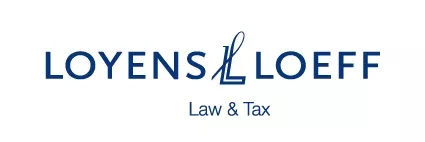- within Finance and Banking topic(s)
- within Consumer Protection, Privacy and Antitrust/Competition Law topic(s)
US fund managers (USFM) that consider an EU fundraising usually rely on an investor-facing Luxembourg special limited partnership (SCSp) qualifying as an alternative investment fund for European purposes (AIF) as part of their wider fund complex. An SCSp is eligible for an EEA marketing passport, provided it is managed through an EEA-based authorized alternative investment fund manager (AIFM). Without the passport, the SCSp's offering in the EEA is more restricted. There is however another important condition to be fulfilled to secure the passport.
The SCSp seldom faces the targeted investments directly. Instead, the SCSp typically invests via another entity (Aggregator) through which US and/or Cayman investor-facing vehicles that are part of the same fund complex also invest. Between the SCSp and the Aggregator, USFM often structure so-called blocker or splitter entities to accommodate the tax needs of certain pools of investors and carried interest holders.
If the SCSp exposes at least 85% of its assets in another AIF, the SCSp qualifies as a 'feeder AIF' (Feeder AIF) and the other AIF qualifies as a 'master AIF' (Master AIF). Assets exposed in AIFs with identical investment strategies must be aggregated to assess the 85% rule. The 85% rule is applied on a look-through basis.
The benefit of the passport is lost if the SCSp is a Feeder AIF to a non-EEA Master AIF. The rationale is that a marketing passport should only benefit EEA Feeder AIFs if the investment strategy is predominantly conducted through AIFs that are themselves entitled to the passport. Hence, a European Feeder AIF to a Delaware or Cayman Master AIF would not benefit from the marketing passport. On the other hand, non-EEA AIFs that invest in parallel with the SCSp are not problematic for the 85% rule.
When the fund structure is on the drawing board, it is thus key to verify whether any non-EEA vehicle to which the SCSp exposes 85% or more of its assets qualifies, from an EU perspective, as an AIF. The latter is in principle only the case if the non-EEA vehicle conducts its own investment policy and aims to directly or indirectly onboard external capital. It can generally be held that non-EEA structuring vehicles below an SCSp such as aggregators, blockers and splitters do not qualify as AIFs and are thus not problematic.
The 85% rule does technically not provide a ramp-up. However, an SCSp that conducts e.g. a secondary fund strategy and makes its first investment in a non-EEA AIF should not immediately lose its passporting rights. As long as its genuine intention is to dilute below 85% by the end of the investment period, passporting rights should remain valid.
When USFM tap into the pool of EEA capital with a passported SCSp, they should have the master-feeder rules top of mind.
The content of this article is intended to provide a general guide to the subject matter. Specialist advice should be sought about your specific circumstances.



